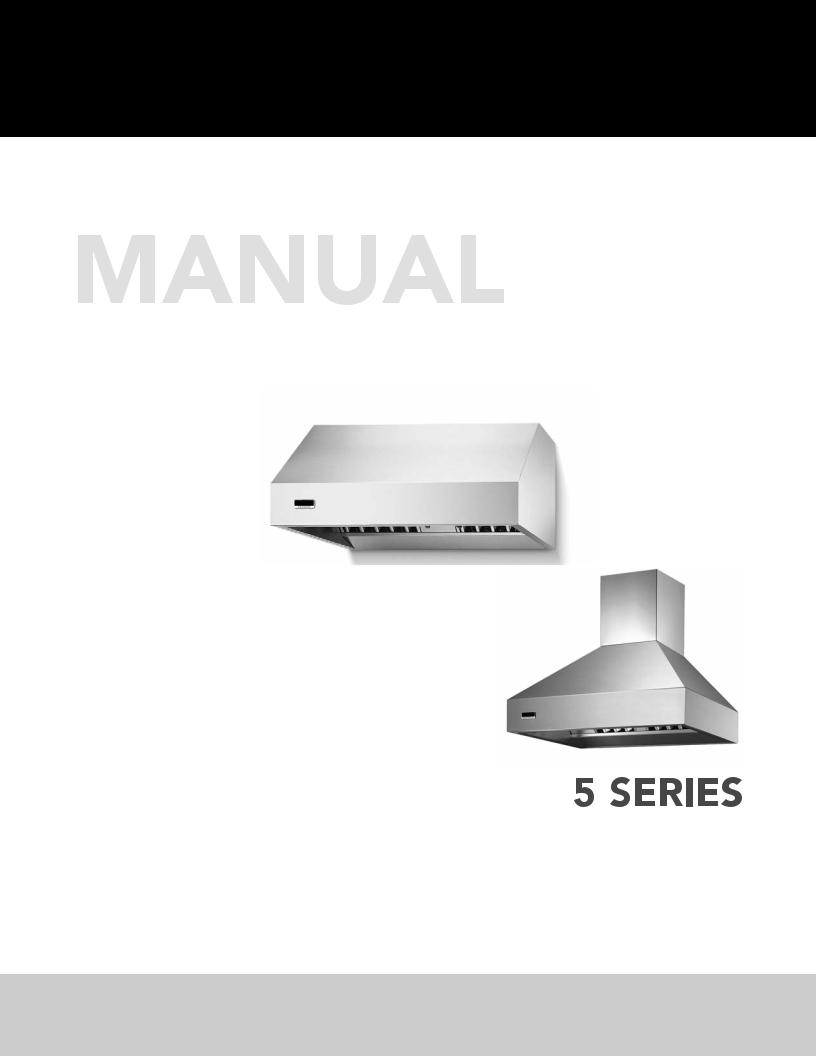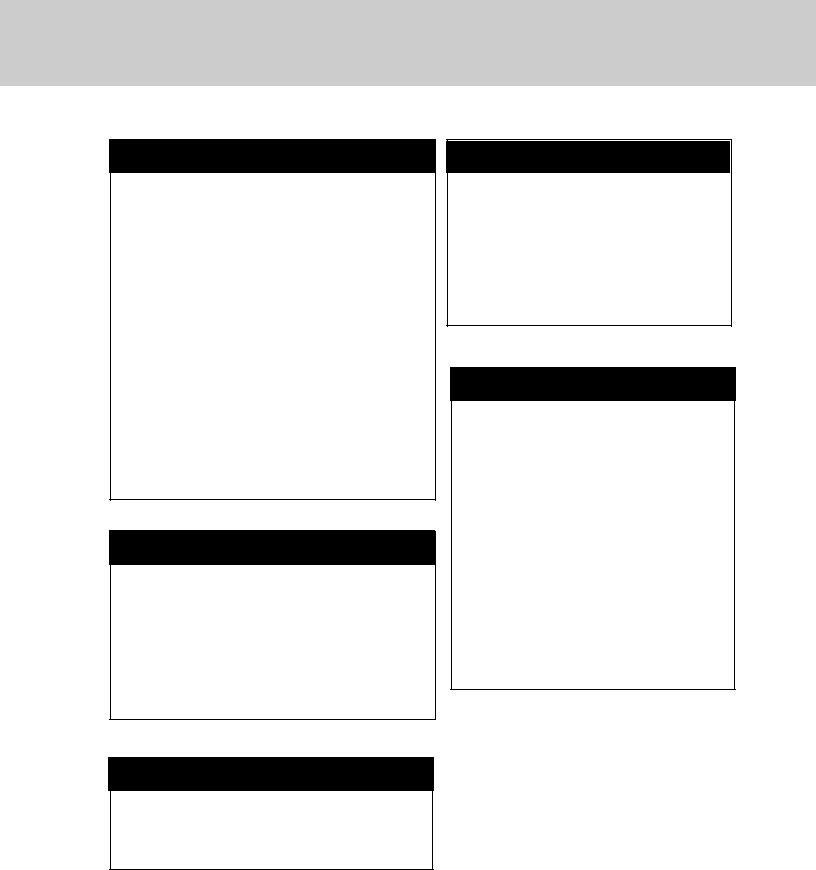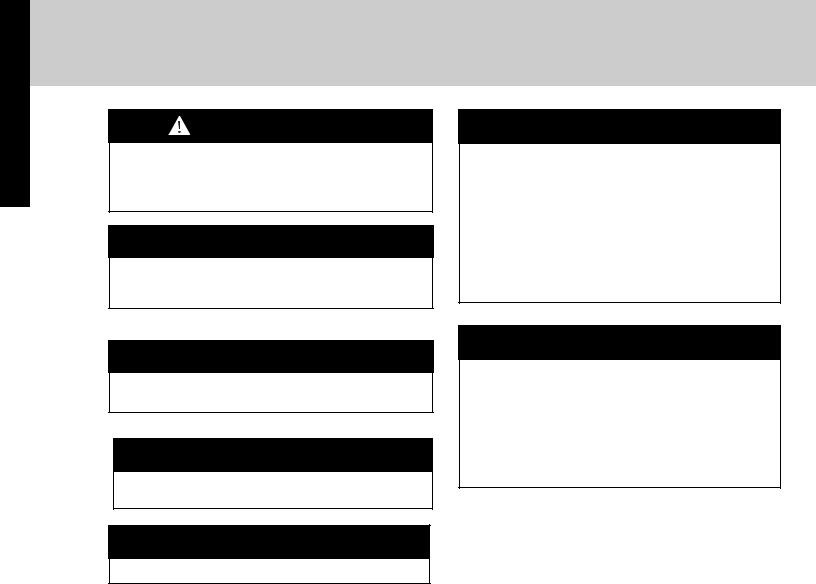Viking VIRERADWRH1430, VIRERADWMW426, VIRERADWRH1045, VIRECTWODWRH141, VWH542481CB Manual
...
Use & Care
Professional Indoor & Outdoor Hoods
VWH53012 / CVWH53012 / VWH53612 / CVWH53612 VWH53048 / CVWH53048 / VWH53648 / CVWH53648 / VWH54248 / CVWH54248 / VWH54848 / CVWH54848 / VWH56048 / CVWH56048 VCWH53048 / CVCWH53048 / VCWH53648 / CVCWH53648 / VCWH54248 / CVCWH54248 / VCWH54848 / CVCWH54848 / VCWH56048 / CVCWH56048
VCIH53608 / CVCIH53608 / VCIH54208 / CVCIH54208 / VCIH55408 / CVCIH55408 / VCIH56608 / CVCIH56608 VBCV53638 / CVBCV53638 / VBCV54238 / CVBCV54238 / VBCV54838 / CVBCV54838 / VBCV56038 / VBCV56038 VWHO3678 / VWHO4878 / VWHO6078 (Canadian Outdoor models not applicable)

Congratulations
Your purchase of a Viking Range hood attests to the importance you place upon the quality and performance of the major appliances you use. With minimal care, as outlined in this guide, your new hood is designed to provide you with years of reliable service. Please take a few minutes to learn about its proper and efficient use and care.
This guide will provide you with the information you need to become familiar with your hood’s care and operation.
Your complete satisfaction is our ultimate goal. If you have any questions or comments about this product, please contact the dealer from whom you purchased it, or contact our Consumer Support Center at 1-888-845-4641.
We appreciate your choosing a Viking Range, LLC product, and hope that you will again select our products for your other major appliance needs.
For more information about the complete and growing selection of products, visit us online at vikingrange.com in the US or brigade.ca in Canada
Table of Contents
Getting Started
Before Using Hood ____________________________________________________________________________________2
Warnings ____________________________________________________________________________________3
Product Controls/Operation
Settings and Functions ________________________________________________________________________________5
Hood Operation __________________________________________________________________________________5
Using Outdoor Models _____________________________________________________________________________5
Product Care
Cleaning and Maintenance ____________________________________________________________________________6
Baffle Filters ______________________________________________________________________________________6
Charcoal Filters _________________________________________________________________________________________ 7
Hood Canopy __________________________________________________________________________________________ 7
Enamel Finish_____________________________________________________________________________________7
Stainless Steel Finish ______________________________________________________________________________7
Ductless Venting Chamber ________________________________________________________________________7
Light Bulbs _______________________________________________________________________________________8
Service Information ____________________________________________________________________________________9
Warranty _____________________________________________________________________________________________10
Before Using Hood
Although the hood is cleaned upon completion of the manufacturing process, you will probably need to clean your hood again after installation. Wipe the surface of the hood with a good household cleaner applied with a soft cloth, or stainless steel polish, depending on the finish of your hood. This will leave a protective finish on the hood.
2

Warnings
READ AND SAVE THESE INSTRUCTIONS
 WARNING
WARNING
To reduce the risk of fire, electric shock, or injury when using your unit, observe the following:
•Installation work and electrical wiring must be done by qualified person(s) in accordance with all applicable codes and standards, including fire-rated construction.
•Sufficient air is needed for proper combustion and exhausting of gases through the flue (chimney) of fuel burning equipment to prevent back drafting. Follow the heating equipment manufacturer’s guideline and safety standards such as those published by the National Fire Protection Association (NFPA), and the American Society for Heating, Refrigeration and Air Conditioning Engineers (ASHRAE), and the local code authorities.
•When cutting or drilling into wall or ceiling, do not damage electrical wiring and other hidden utilities.
•Ducted fans must always be vented to the outdoors.
•WARNING!: To reduce the risk of fire, use only metal ductwork.
•CAUTION!: To reduce risk of fire and to properly exhaust air, be sure to duct air outside. Do not vent exhaust air into spaces within walls or ceilings, or into attics, crawl spaces, or garages.
 WARNING
WARNING
To reduce the risk of fire, electric shock, or injury to persons, observe the following:
•Use this unit only in the manner for which it is intended. If you have any questions, contact the manufacturer.
•Before servicing or cleaning unit, switch power off at service panel and lock service panel to prevent power from being switched on accidentally. When the service disconnecting means cannot be locked, securely fasten a prominent warning device, such as a tag, to the service panel.
 WARNING
WARNING
TO REDUCE THE RISK OF A RANGETOP GREASE FIRE:
1.Never leave surface units unattended at high setting. Boilovers cause smoking and greasy spillovers that may ignite. Heat oils slowly on low or medium settings.
2.Always turn hood ON when cooking at high heat or when cooking flaming foods. (i.e. Crepes suzette, Cherries jubilee, Peppercorn beef flambé).
3.Clean ventilating fans frequently. Grease should not be allowed to accumulate on fan or filter.
4.Use proper pan size. Always use cookware appropriate for the size of the surface element.
 WARNING
WARNING
To reduce the risk of injury to persons in the event of a rangetop grease fire, observe the following: (Based on “Kitchen Firesafety Tips,” published by NFPA.)
1.SMOTHER FLAMES with a close fitted lid, cookie sheet, or metal tray, then turn off the burner. BE CAREFUL TO PREVENT BURNS. If the flames do not go out immediately, EVACUATE AND CALL THE FIRE DEPARTMENT.
2.NEVER PICK UP A FLAMING PAN. You may be burned.
3.DO NOT USE WATER, including wet dishcloths or towels a violent steam explosion will result.
4.Use an extinguisher ONLY if
•You know it is a Class ABC extinguisher, and you already know how to operate it.
•The fire is small and contained in the area where it started.
•The fire department is being called.
•You can fight the fire with your back to an exit.
 WARNING
WARNING
TO REDUCE THE RISK OF FIRE, ELECTRICAL SHOCK, OR INJURY TO PERSONS, RANGEHOODS MUST BE INSTALLED WITH THE VENTILATORS THAT ARE SPECIFIED ON THEIR CARTON INDICATING SUITABILITY WITH THIS MODEL. OTHER VENTILATORS CANNOT BE SUBSTITUTED.
3

Getting Started
Warnings
CAUTION
For general ventilating use only.
-DO NOT use to exhaust hazardous or explosive materials and vapors.
-DO NOT flambe under the hood.
 CAUTION
CAUTION
If the power to the hood is not disconnected during cleaning, the heat sensor thermostat can cause the blower to turn on.
 CAUTION
CAUTION
Unplug power cords from control panel before cleaning or servicing hood.
 CAUTION
CAUTION
DO NOT place flammable material on warming shelves when using heat lamps.
 CAUTION
CAUTION
Do not use a porcelain cleaner or rough abrasive cleaner.
 CAUTION
CAUTION
Accessible parts may become hot when used with cooking appliance.
-Children should be supervised to ensure that they do not play with the appliance.
-This appliance is not intended for use by persons (including children) with reduced physical sensory or mental capabilities, or lack of experience and knowledge, unless they have been given supervision or instruction concerning use of the appiance by a person responsible for their safety.
 CAUTION
CAUTION
This appliance is not to be used by persons (including children) with reduced physical, sensory or mental capabilities, or lack of experience and knowledge, unless they have been given supervision or instruction concerning the use of the appliance by a person responsible for their safety. Children should be supervised to ensure that they do not play with the appliance.
4
